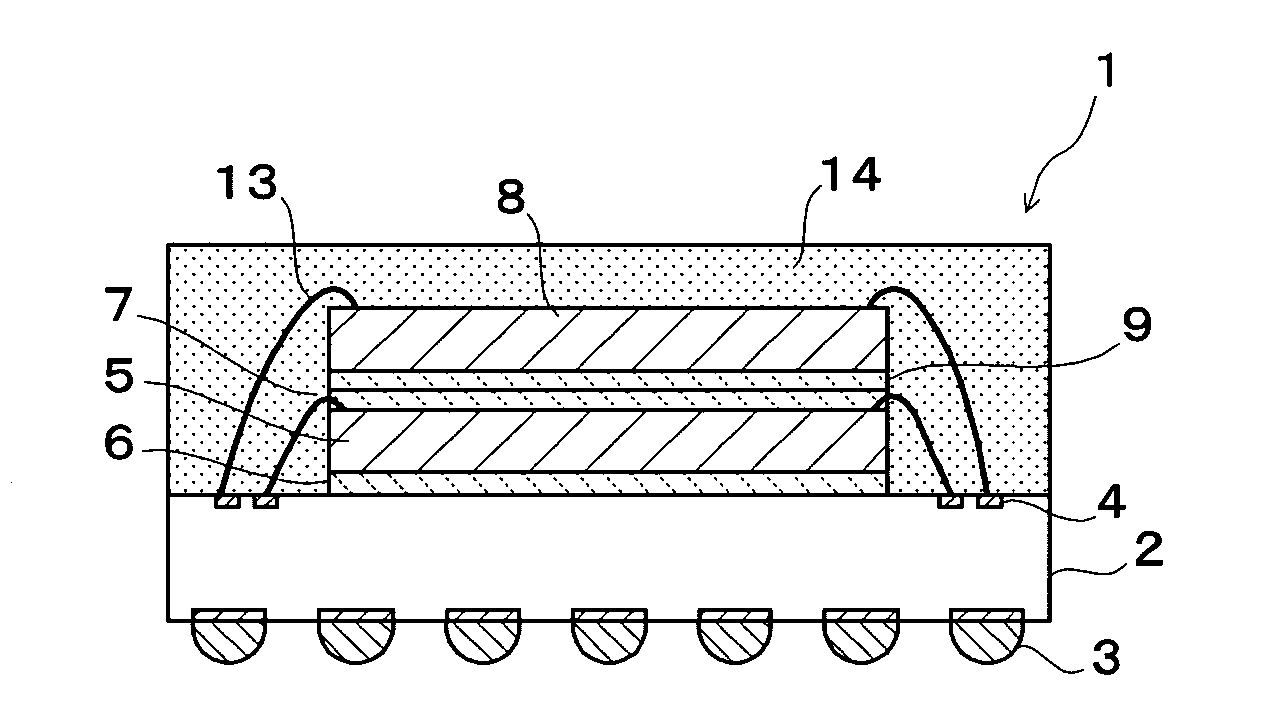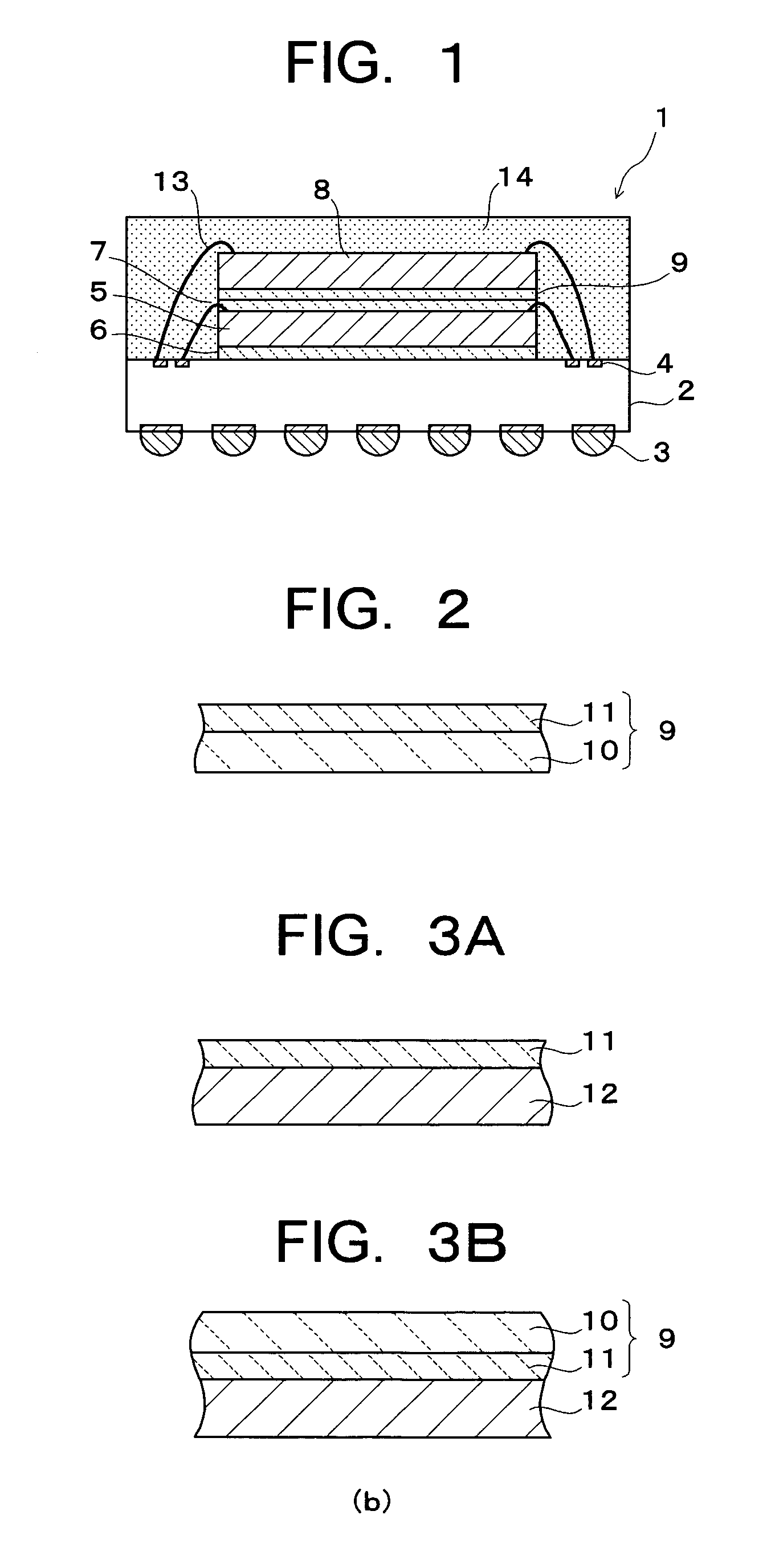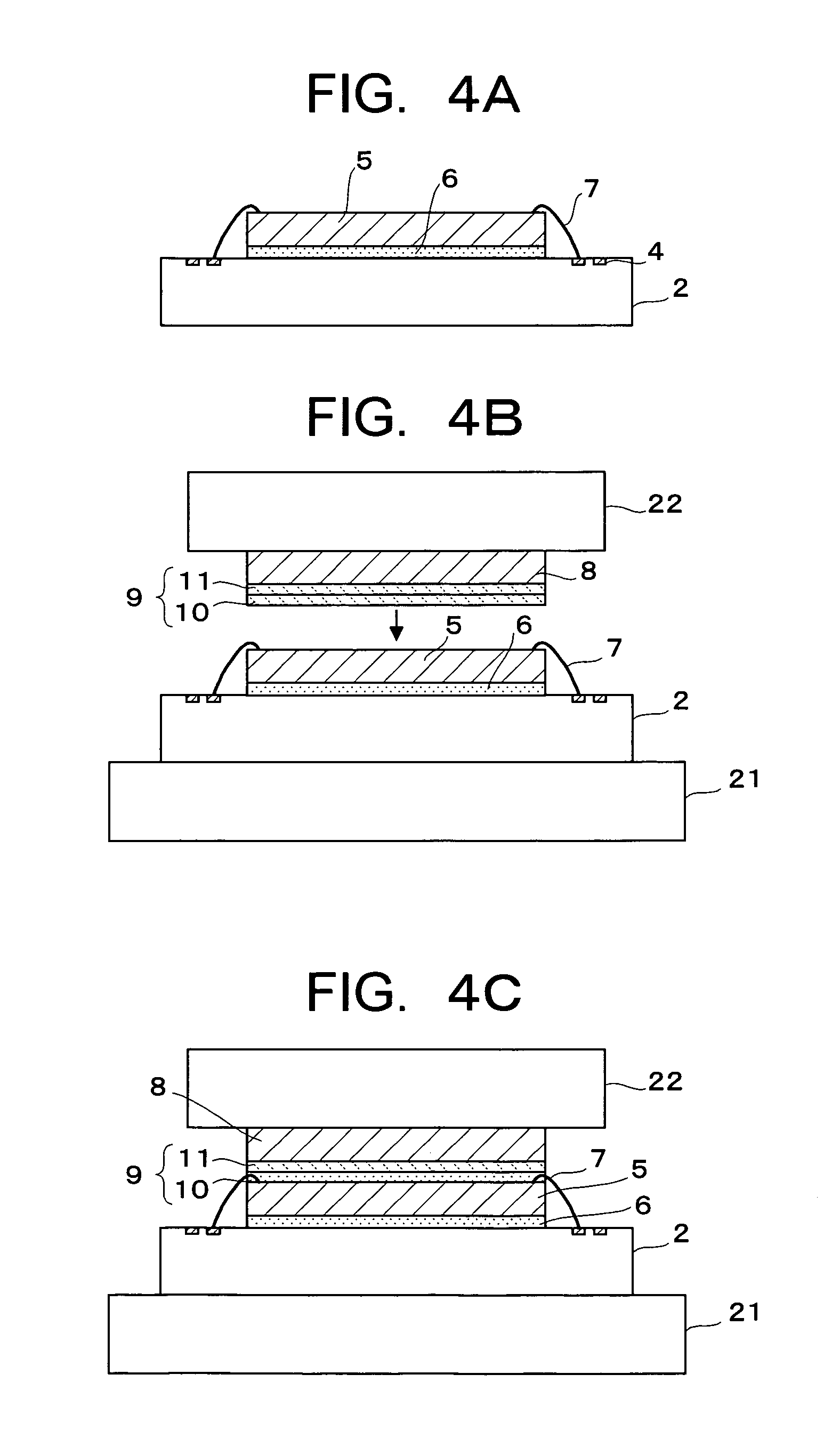Stacked electronic component and manufacturing method thereof
a technology of electronic components and manufacturing methods, applied in the direction of basic electric elements, semiconductor devices, electrical equipment, etc., can solve the problems of easy peeling between stacked semiconductor elements, affecting the thickness of the package (semiconductor devices), and limiting the application of semiconductor elements, so as to reduce peeling failure and increase manufacturing costs.
- Summary
- Abstract
- Description
- Claims
- Application Information
AI Technical Summary
Benefits of technology
Problems solved by technology
Method used
Image
Examples
first embodiment
[0050]FIG. 1 is a sectional view schematically showing a configuration of a semiconductor device with a stacked-type multi chip structure (stacked-type semiconductor device) applying a stacked-type electronic component of the present invention. A semiconductor device 1 shown in the view has a substrate 2 for mounting elements. The substrate 2 is capable for mounting electronic components such as semiconductor elements, and has a circuit being electrically connected to electrodes of the semiconductor element, and so on. As such substrate 2, a circuit board in which a circuit (wiring) is formed on a surface or inside of an insulating substrate, a semiconductor substrate, and so on, or a substrate in which an element mounting portion and a circuit portion are integrated, such as a lead frame, and so on, can be used.
[0051] The semiconductor device 1 shown in FIG. 1 has a circuit board 2 as the element mounting substrate. As the insulating substrate constituting the circuit board 2, the ...
second embodiment
[0099] Further, the second semiconductor element 8 is offset and disposed relative to the first semiconductor element 5. Consequently, both end portions of the second semiconductor element 8 corresponding to wire bonding portions are protruding outside from an outer periphery of the first semiconductor element 5. Below these protruding portions 63, the second adhesive layer 61 is filled by softened or melted at a heating temperature (adhesive temperature) when the second semiconductor element 8 is adhered. Namely, a part of the second adhesive layer 61 softened or melted at the heating temperature is filled below the protruding portions 63 of the second semiconductor element 8, so that hollow portions below the protruding portions 63 do not appear. A thickness of the second adhesive layer 61 is preferable to be set accordingly in consideration with a filling amount of the hollow portions, as same as the
[0100] According to the above-stated semiconductor device 60 of the fourth embodi...
fifth embodiment
[0112] The above-stated semiconductor device 70 of the fifth embodiment is created, for example, as described below. The manufacturing process of the semiconductor device 70 is described with reference to FIG. 26A to FIG. 26D. At first, as shown in FIG. 26A, the first semiconductor element 5 is adhered on the circuit board 2 by using the first adhesive layer 6. Subsequently, the wire bonding process is performed, and the electrode portions 4 of the circuit board 2 and the electrode pads of the first semiconductor element 5 are electrically connected by the first bonding wires 7.
[0113] Next, as shown in FIG. 26B, the insulating columnar bodies 73 are formed at predetermined positions of the circuit board 2 to which the first semiconductor element 5 is adhesive mounted. The insulating column body 73 is formed by coating the thermosetting insulating resin such as the epoxy resin, the light curing insulating resin, and so on, in column state as stated above. The insulating columnar body...
PUM
 Login to View More
Login to View More Abstract
Description
Claims
Application Information
 Login to View More
Login to View More - R&D
- Intellectual Property
- Life Sciences
- Materials
- Tech Scout
- Unparalleled Data Quality
- Higher Quality Content
- 60% Fewer Hallucinations
Browse by: Latest US Patents, China's latest patents, Technical Efficacy Thesaurus, Application Domain, Technology Topic, Popular Technical Reports.
© 2025 PatSnap. All rights reserved.Legal|Privacy policy|Modern Slavery Act Transparency Statement|Sitemap|About US| Contact US: help@patsnap.com



